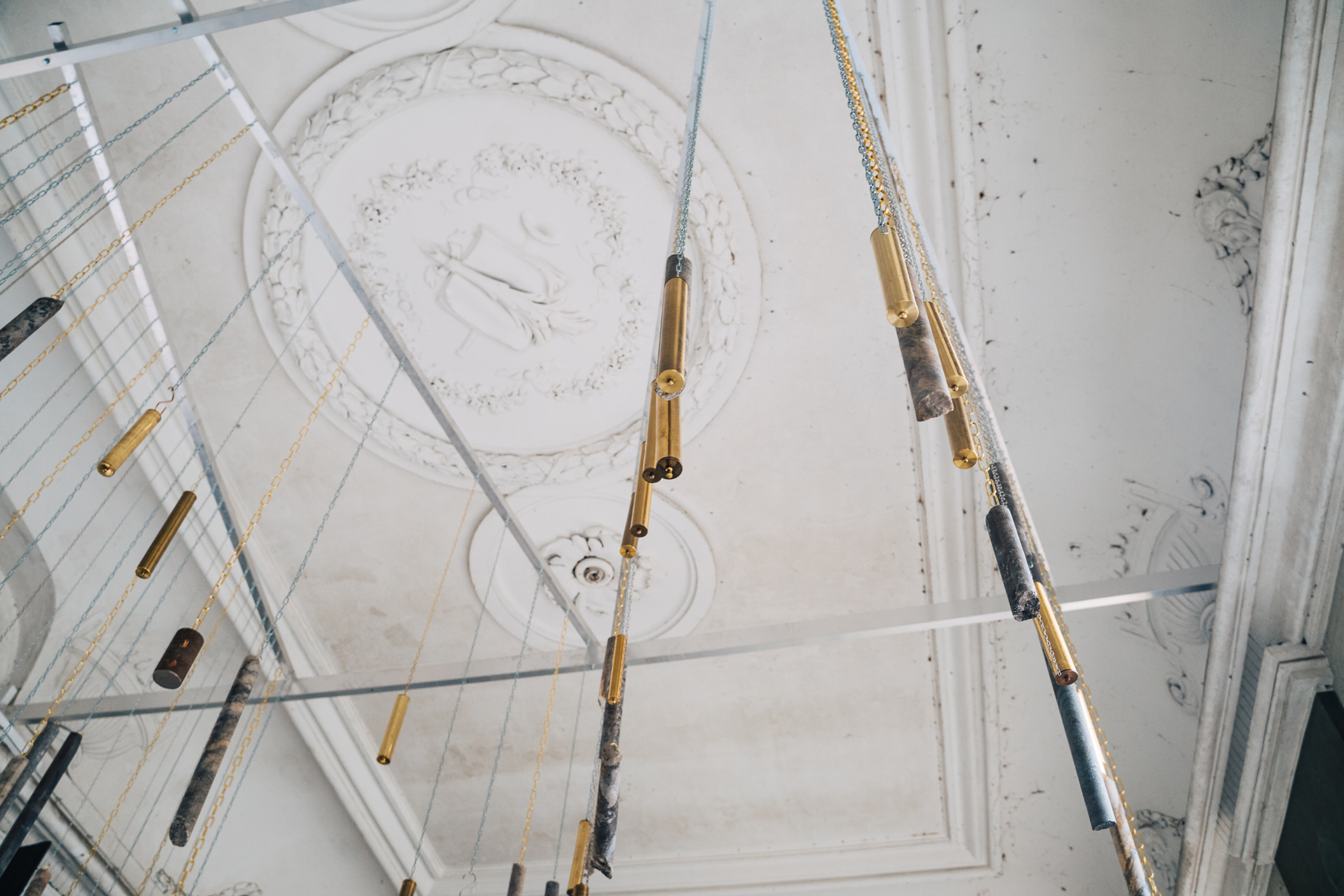Weight of Memories
Weight of Memories opens a sensory space where the weight of time is felt—not just as something physical, but as a deeper resonance in the body and consciousness.
The work consists of brass pendulums, as known from traditional grandfather clocks, and iron cores excavated from some of the planet's oldest rock formations.These rock formations contain billions of compressed years that can be categorized and classified through sedimentation and geological analysis – similar to how astronomers can estimate distances in time and develop theories about the origin of life by studying the same materialities, only in outer space.
Kalsmose explores connectedness to ourselves, to each other and to cosmos. She combines branches of science such as geology and astronomy with spirituality and subjective perspectives. With Weight of Memories, we are confronted with something that intersects different time divisions – geologically with the iron cores and culturally with the brass pendulums. The work reveals how the past is not gone but embedded — a resonance that remains.
The artwork emerged during a period in Kalsmose’s life when she moved from experiencing life as an overwhelming burden to feeling a sense of lightness by gaining a broader perspective. Challenges that may consume an individual entirely can suddenly appear minimal when seen in relation to the lifespan of the Earth. A single tiny ring within an iron core holds the entire span of human existence. It reveals not only how brief the life of an individual is, but also how fleeting all of humankind is when measured against the lifespan of the Earth.
The sculptural installation can function as a meditative landscape that invites presence and slowness. It is a figurative time portal, offering us the chance to step out of the human perception of time and into another rhythm, a rhythm anchored in the deep time of the Earth and its minerals.



































